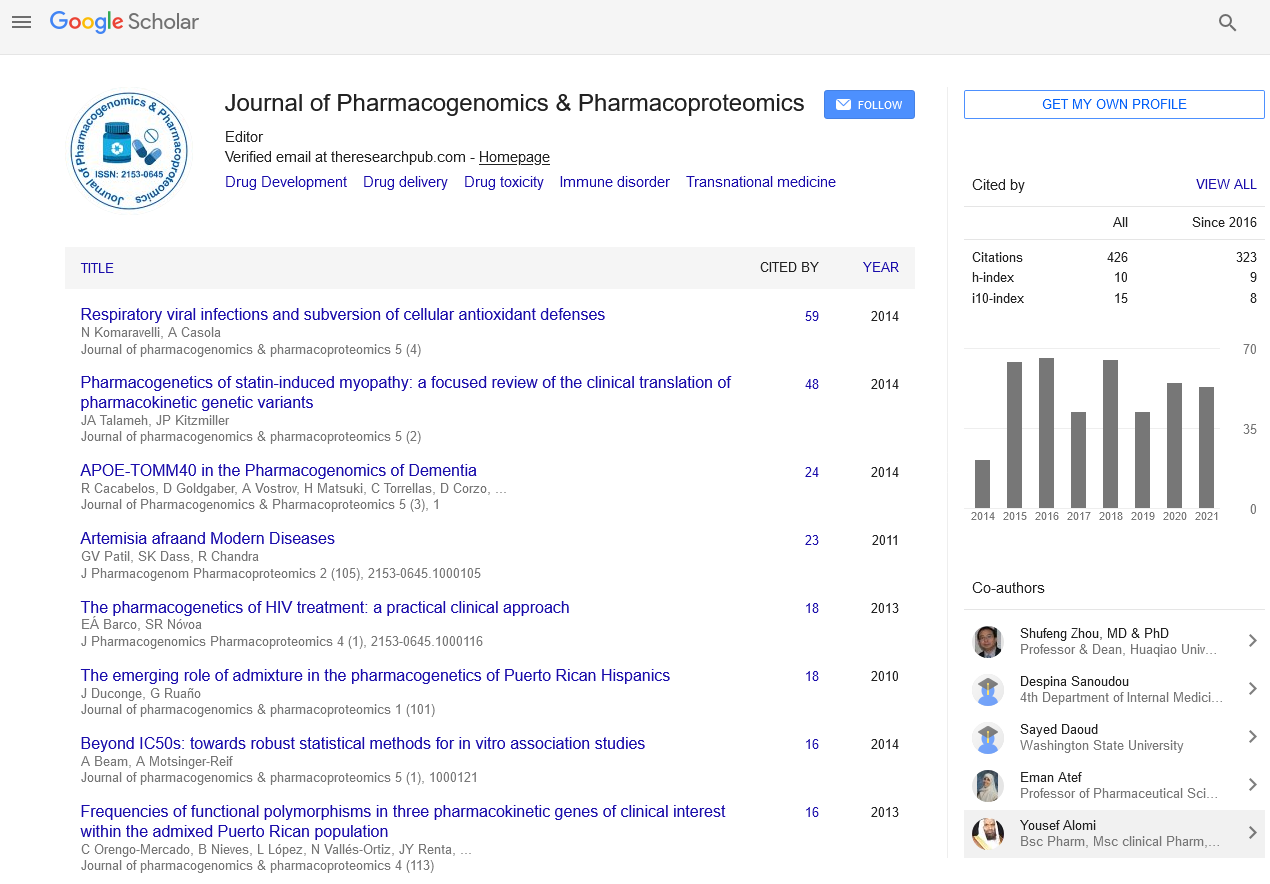Indexed In
- Open J Gate
- Genamics JournalSeek
- Academic Keys
- JournalTOCs
- ResearchBible
- Electronic Journals Library
- RefSeek
- Hamdard University
- EBSCO A-Z
- OCLC- WorldCat
- Proquest Summons
- SWB online catalog
- Virtual Library of Biology (vifabio)
- Publons
- MIAR
- Euro Pub
- Google Scholar
Useful Links
Share This Page
Journal Flyer

Open Access Journals
- Agri and Aquaculture
- Biochemistry
- Bioinformatics & Systems Biology
- Business & Management
- Chemistry
- Clinical Sciences
- Engineering
- Food & Nutrition
- General Science
- Genetics & Molecular Biology
- Immunology & Microbiology
- Medical Sciences
- Neuroscience & Psychology
- Nursing & Health Care
- Pharmaceutical Sciences
Abstract
G-Protein Coupled Receptors Dimerization: Diversity in Somatostatin Receptors Subtypes
Five specific receptor subtypes namely somatostatin receptor 1-5 (SSTR1-5) that are differentially expressed in central and peripheral tissue in selective manner have different role in many human pathological conditions. SSTRs possess seven-transmembrane spanning domains and are linked to G-proteins; therefore, belong to the superfamily of G-protein coupled receptors (GPCRs). There is a preponderance of evidence suggesting the importance of GPCR dimerization in receptor-biogenesis, regulation and pharmacology. SSTR subtypes dimerization, with specific interest on the formation of heterodimers within the family or other related receptors, generates novel receptors with unique pharmacological, biochemical and enhanced signaling properties distinct from those of the native receptor existing as monomers or dimers. An understanding of the molecular mechanisms involve in SSTR dimerization could offer a rationale in future drug design. Importantly, gaining insights on the structure, function and signaling pathways of SSTR subtypes would represent a major advance in improving the treatment of various diseases such as neurodegenerative diseases and the tumors of various origins. In addition to discuss the significance of SSTR subtypes homo-and heterodimerization in particular, this review first describes the concept of GPCRs dimerization and the role of key membrane associated signaling proteins.


